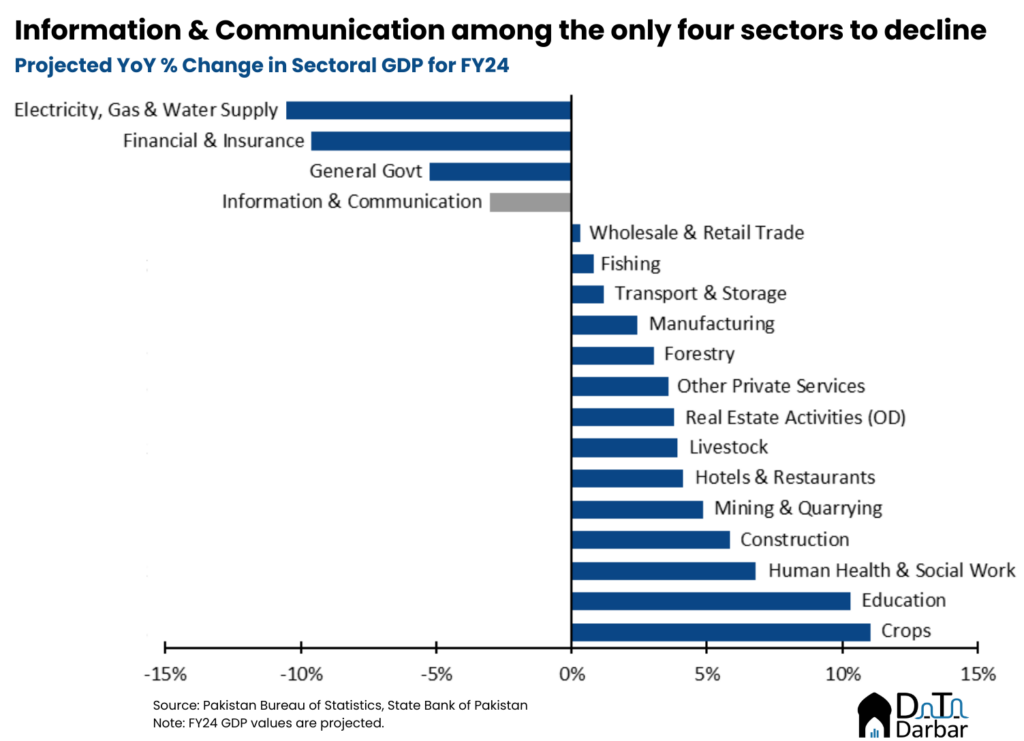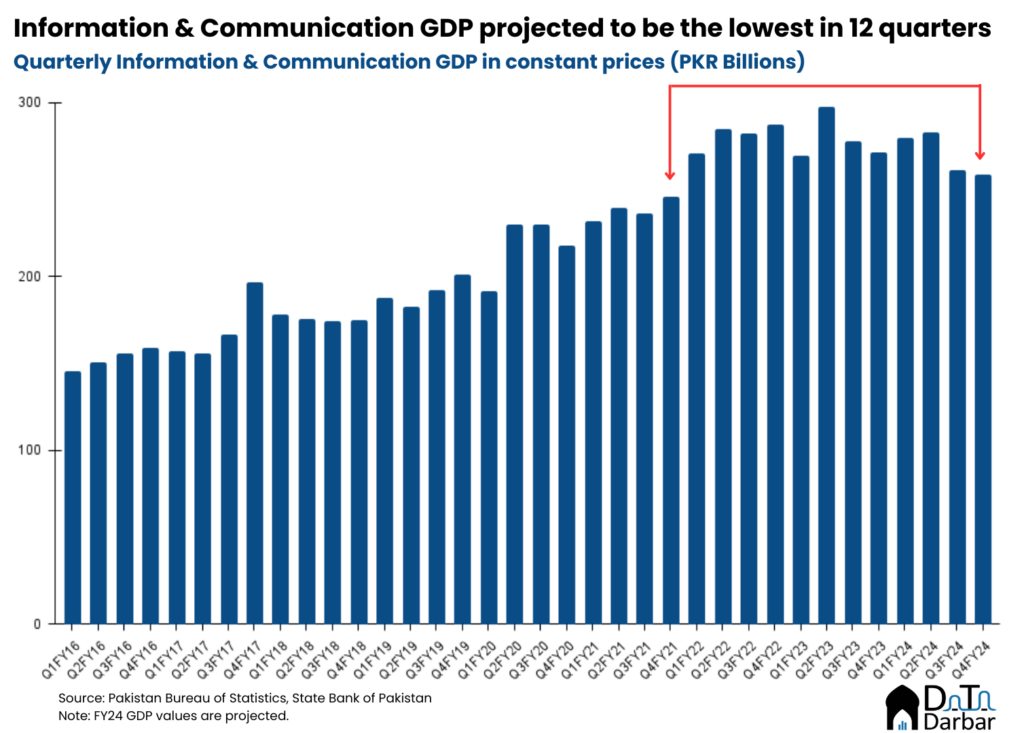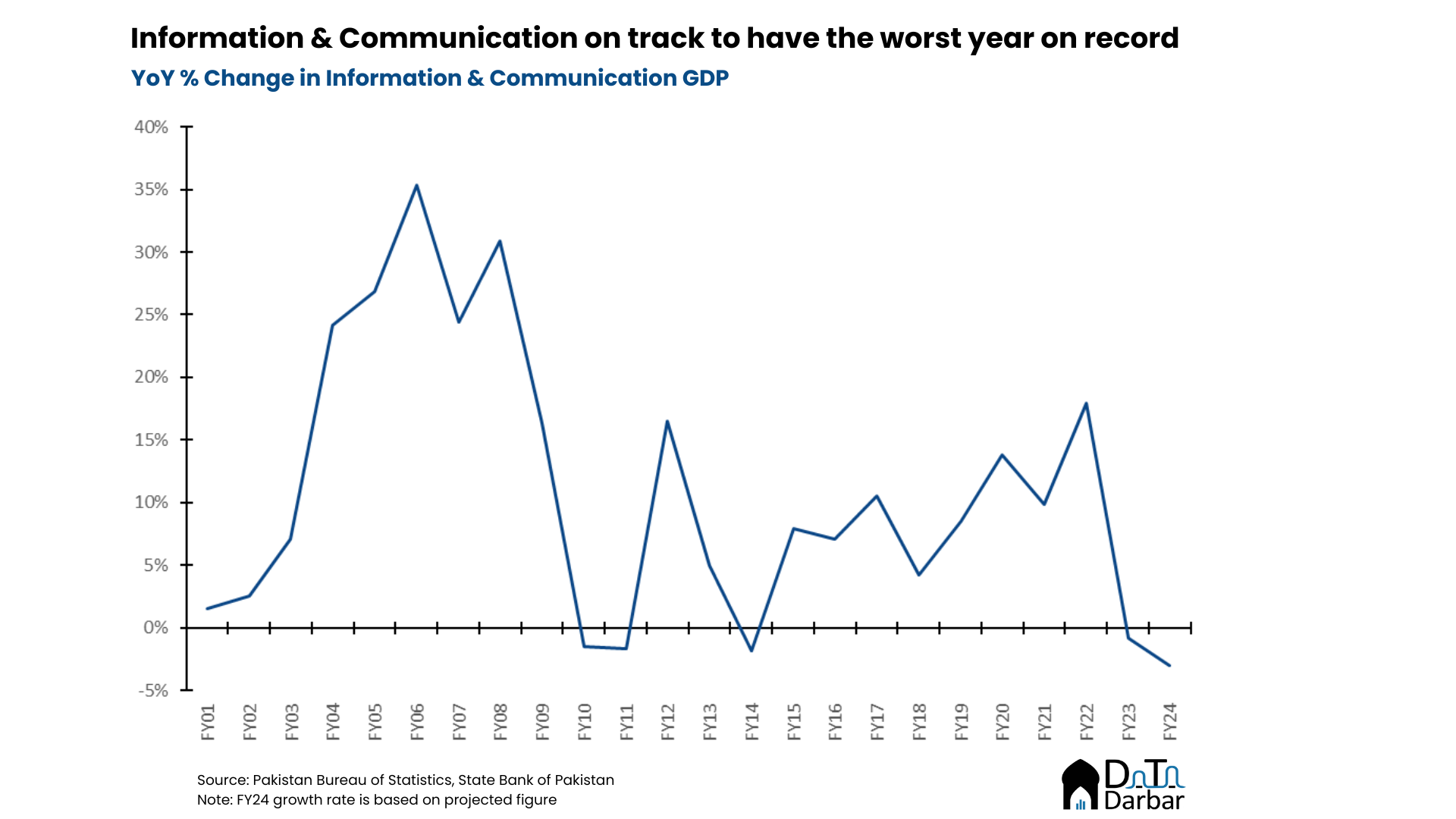Over the last decade, Pakistan’s economic trajectory has been inconsistent, characterized by periods of boom followed by bust. Amidst this turbulence, the tech sector stood out as a bright spot, offering decent career prospects and outperforming other industries. There have been a billion speeches and a million op-eds on the same.
Between FY15 and FY24, information and communication (used as a proxy for tech) increased at a compound annual growth rate of 6.61%, more than twice as fast as the overall economy and ahead of all other broad sectors. The trend remains the same even if you stretch your time horizon by another decade.

Putting the decline in context
However, recent data suggests that the long growth run of the sector has come to an end. The early warning signs appeared when information and communication gross domestic product (GDP) edged lower by 0.8% in FY23, steeper than the overall economic slowdown of -0.21%. It didn’t raise too many eyebrows at the time, perhaps disregarding the occurrence as a one-off. But there should be no doubts anymore.
According to the national accounts published by the SBP, the information and communication GDP is projected to dip by 3.02% in FY24, the worst annual change on record. This marks the second consecutive year of decline for the sector, a trend last seen in FY10 and FY11. Moreover, it is now among the only three sectors to have consecutively fallen for two years, along with finance & insurance, and general government.

From a quarterly perspective, the trend looks even more dismal. The information and communication GDP in April-June is projected to be PKR 258.3 billion, the lowest in 12 quarters. That is three years. Essentially, the sector’s income today in constant rupee terms is lower than what it was during Q4 FY21.

Before some Captain Obvious jumps in, let me very explicitly state that information and communication does not exclusively mean technology. It also includes telecom, which has been undergoing serious stress with declining revenue per user among other things. However, the rot now seems to have permeated into tech as well, as we talked here. In either case, it shouldn’t really matter because the same ministry looks after both the industries.
This is not to suggest that there are no pockets of opportunities in the Pakistani tech industry. But there should no longer be any doubt that the broader sector has hit roadblocks. There could be many reasons for this slowdown, nay decline, including the fact that a large component of the sector’s earnings are parked abroad.
Unfortunately, those in power are more into photo ops and self congratulatory posts whenever exports edge up. However, correcting the course would require both the humility to introspect and the curiosity to understand what went wrong. And that requires looking at uncomfortable data every once in a while.

